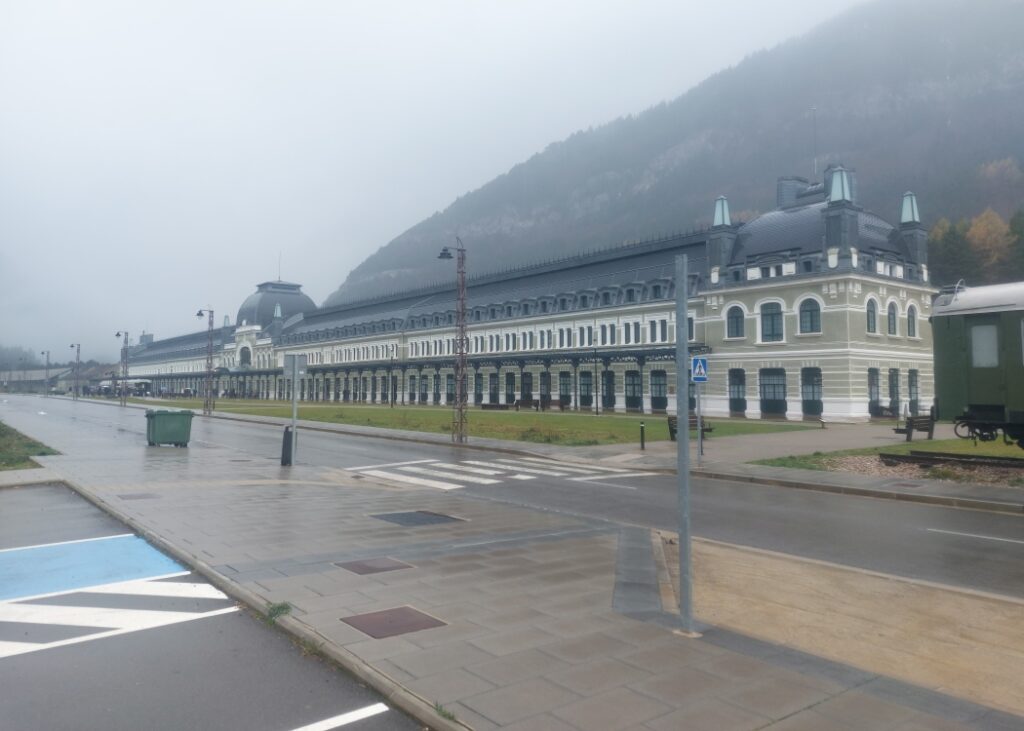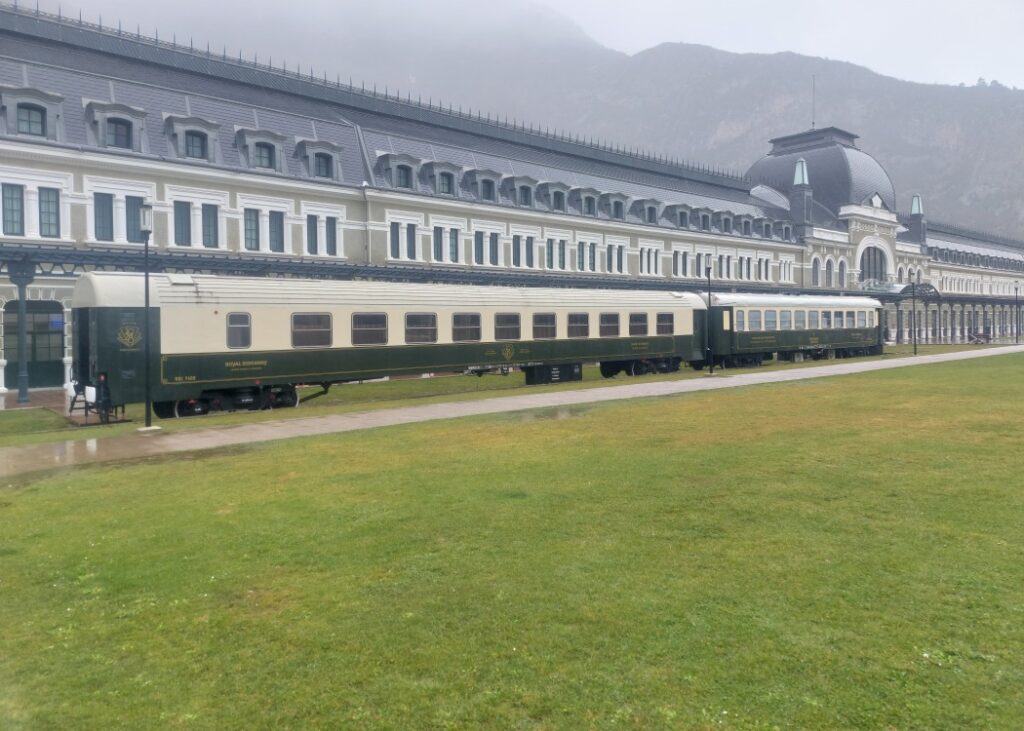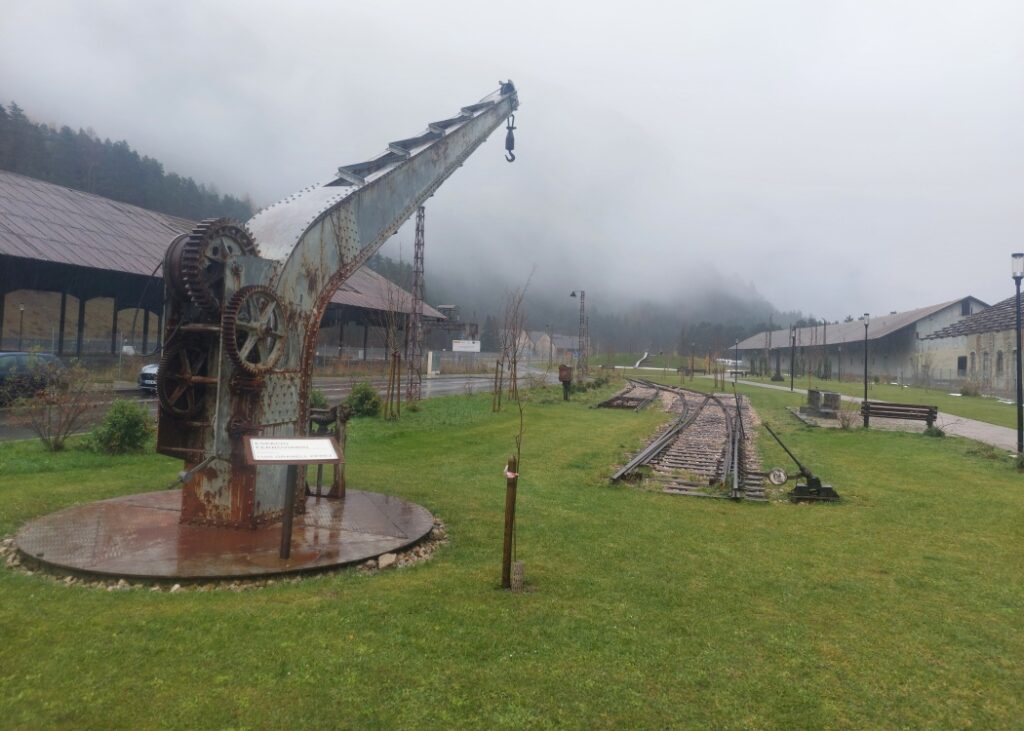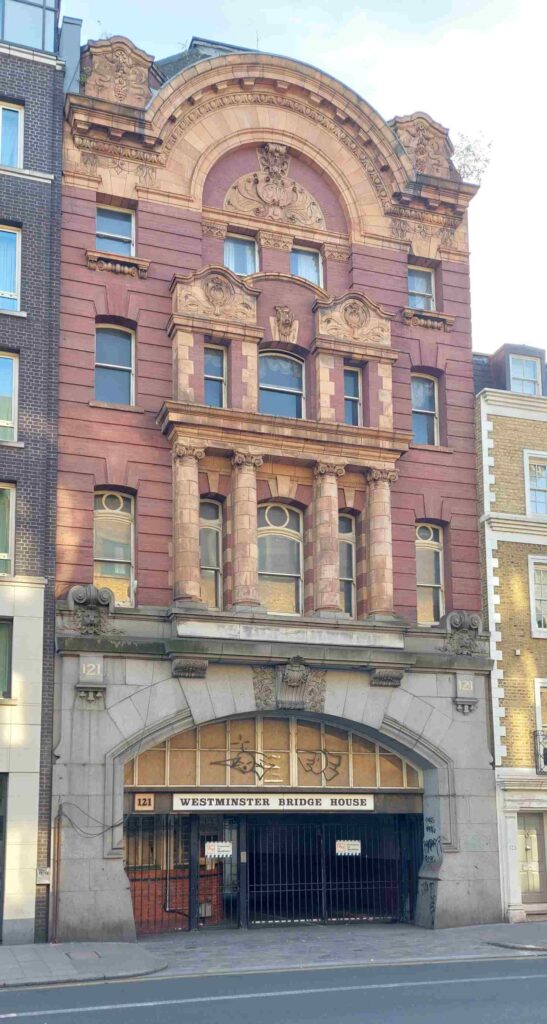
Located in northern Spain is Canfranc station, nowadays a 5 star hotel but opened in 1928 as an international border station between Spain and France, on a line running through the Somport railway tunnel. At the time of opening, it was the 2nd largest station in Europe (Leipzig Hauptbahnhof in Germany being the biggest).
No through trains ran beyond Canfranc as France uses the international standard gauge of 4 foot 8.5 inches whereas Spain has its own gauge of 5 foot 6 inches. The station acted as a transhipment point.
The station continued in this role until 1970 when a train derailment in France damaged a bridge on the route, which saw the cross border line closed. Spanish services continued from Zaragoza, as they do today, albeit now to a new station adjacent to the original.
Renovation of the spectacular station building started in 2020 with the hotel opening in January 2023. In addition to the station building, there is a restaurant in 2 carriages located on the site of the historic tracks of the original station (the modern station is off to one side on the site of former sidings).

I am writing this post from the hotel, having arrived off the train from Zaragoza at 19:50 on Sunday, after travelling by train from Barcelona. This involved a change of train at Zaragoza and again at Huesca. The reception staff seemed surprised at both my method of getting here and that I had travelled all the way from Ireland!
The modern day station is nothing spectacular from an architectural viewpoint, with three platforms and a siding for a grain silo. Elsewhere on the site of the former station, there are static displays of former track and two carriages.




